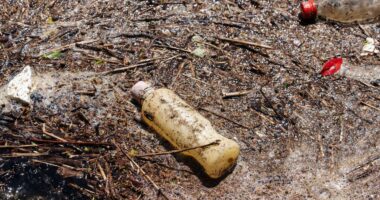NEARLY 70 decomposing bodies were left to rot in wheelie bins and suitcases in a chilling scene that resembled a horror movie – but for one very important reason.
It was all part of a scientific study to help crime scene investigators around the world understand the decomposition process of human remains.
The world’s largest experiment on decomposing remains used nearly 70 piglets placed in either a wheelie or suitcase – while some acted as a control and were left exposed to the elements.
The rotting bodies have been left for over a month now in 20C temperatures in the bushlands of Western Australia.
Scientists have regularly tested the temperature and humidity inside and outside the bins and cases to measure how the bodies were affected.
Microbiological and chemical changes to the remains were also studied as well as the effects of insects that colonise the carcass.


Its hoped that the gruesome study will aid forensic scientists working on murder investigations that involve rotting human remains.
Paola Magni, Senior Lecturer in Forensic Science, Murdoch University describes these concealed locations as “limited access environments”.
She explained: “This happens because the perpetrators try to avoid an easy discovery by the authorities and/or because they need something in which they can temporarily store and move the body from place to place: from the primary crime scene where the death event/murder happens to the secondary crime scene, where the body is left or discovered.
“Last year the remains of a man were found in a wheelie bin dumped in a dam near Perth, and a few weeks ago the remains of two kids have been found in two suitcases in New Zealand, confirming that this type of research is much needed.”


Dr Magni said: “Time is crucial in the reconstruction of the events, to pinpoint people, places and motives.”
She says forensic pathologist has a very short window of about three days after the death to establish a timeline
However, any insects found in the body can provide information for days, months and even years after the death.
The study will help with “the understanding of the succession of the insects in limited access environment provides new information to add to the toolbox of the forensic entomologist.”
Only three other similar studies have been carried out in the world, including one in the US and UK, according to Dr Magni.
Most read in Tech
She said the data available at the moment is not good enough to support criminal investigations concerning bodies found in suitcases and other environments such as wheelie bins.
The results will be published at a forensic science conference in February 2023.











